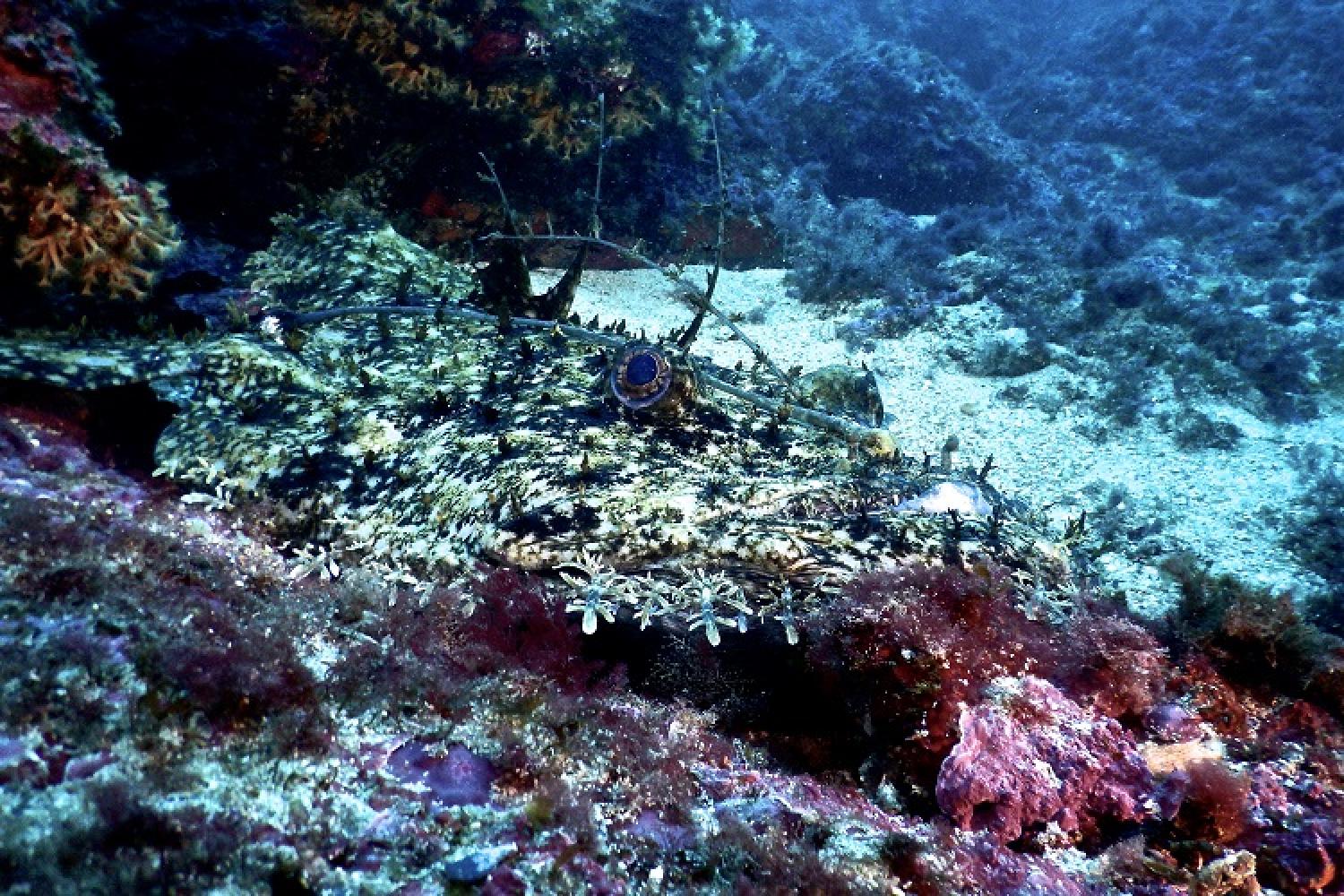Description
This fish's flat, browny, marbled body, unique in its kind, looks like sand and rocks onto which is rests, to the point that we could mistake it for these. This master of camouflage can even change its colour according to its environment! However, given its size and its appearance it cannot be said that the anglerfish goes unnoticed. As an adult it can measure between 70 centimetres and two meters long, its weight is around 40 kg with the heaviest individual weighing in at 58kg! With its bony body, its enormous head, which makes up 60% of its weight, it huge split mouth, its round tail, is viscous skin covered with appendages, it doesn’t go unnoticed when it moves. Here’s a word about the way it hunts: it lies in wait, flat up against the seabed and it uses the first filament of its dorsal fin as a fishing rod, fitted with a fleshy lure. As its prey draws closer and it opens its mouth there is an unforgiving inrush that cannot be fought against by its prey. It eats everything: fish, Crustacea and even seabirds! Indeed, the anglerfish sometimes swims up to the surface and catches seagulls, yellow-legged gulls and coypu. This singular character assiduously visits our region’s coastline. The root of its French name is unclear but is believed to originate from Provençale.
Scientific name
Lophius piscatorius
Natural habitats
- Soft seabeds
- Rocky seabeds
Did you know?
In the film Finding Nemo, by Pixar Studios, released in 2003, there is a well-known scene where an attack takes place in the deepest parts of the sea and in particular shows the anglerfish’s cousin: the humpback anglerfish. With an even stranger and more sinister appearance, to hunt it also uses it first dorsal fin filament which emits light in order to attract its customers!
Conservation stake
Medium
Threats
- Overfishing, industrial fishing, trawling and poaching
- Changes to its environment
- Pollution
How can I help to protect it?
- I use environment-friendly mooring techniques to limit the impact of anchoring on the seabed.
- In the case of anchoring out at sea, I only anchor in areas where marine habitats are not fragile and raise the anchor vertically
- I report any unusual environmental incidents
- I recover waste and dispose of it in suitable bins on land
- I share this best practice with other seafarers and raise their awareness

